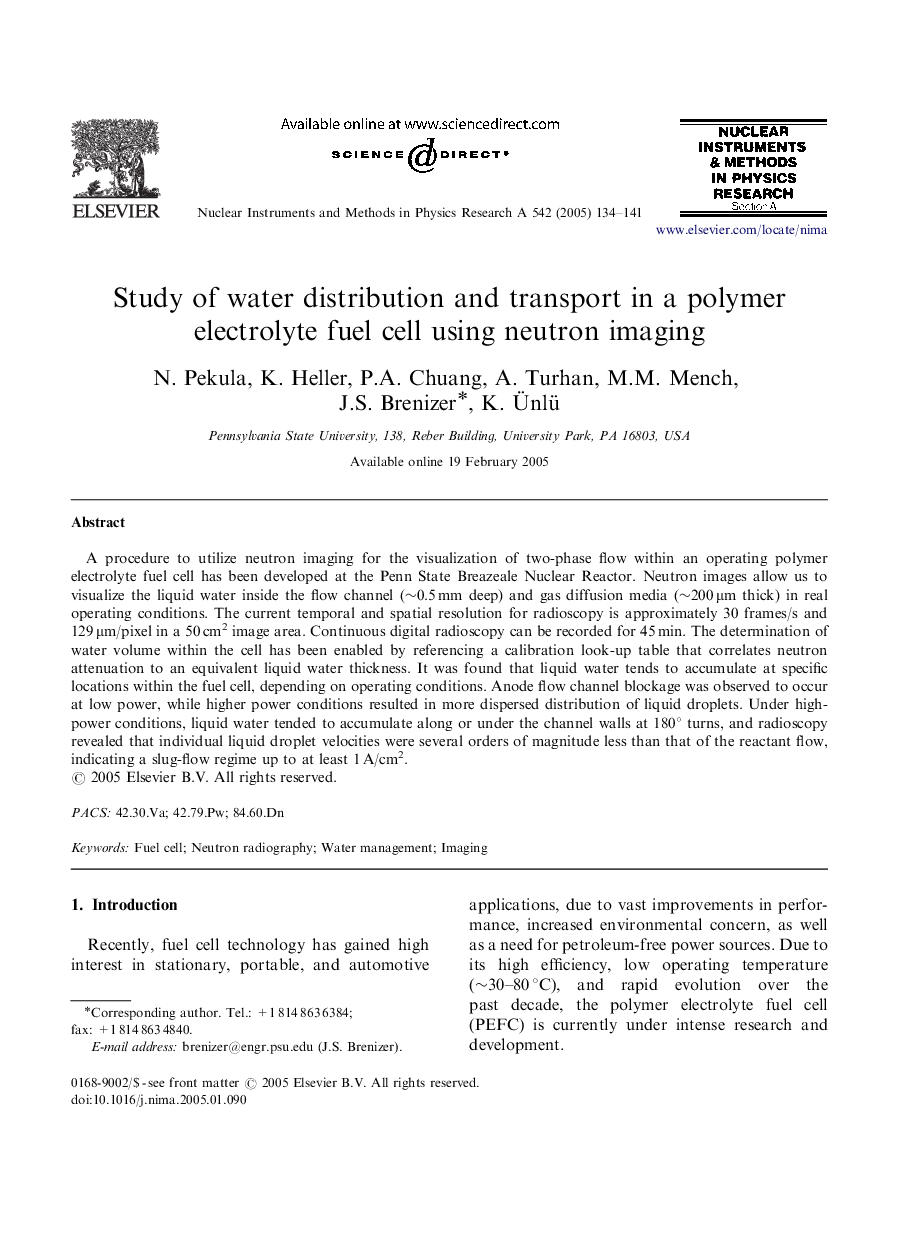| Article ID | Journal | Published Year | Pages | File Type |
|---|---|---|---|---|
| 9845570 | Nuclear Instruments and Methods in Physics Research Section A: Accelerators, Spectrometers, Detectors and Associated Equipment | 2005 | 8 Pages |
Abstract
A procedure to utilize neutron imaging for the visualization of two-phase flow within an operating polymer electrolyte fuel cell has been developed at the Penn State Breazeale Nuclear Reactor. Neutron images allow us to visualize the liquid water inside the flow channel (â¼0.5 mm deep) and gas diffusion media (â¼200 μm thick) in real operating conditions. The current temporal and spatial resolution for radioscopy is approximately 30 frames/s and 129 μm/pixel in a 50 cm2 image area. Continuous digital radioscopy can be recorded for 45 min. The determination of water volume within the cell has been enabled by referencing a calibration look-up table that correlates neutron attenuation to an equivalent liquid water thickness. It was found that liquid water tends to accumulate at specific locations within the fuel cell, depending on operating conditions. Anode flow channel blockage was observed to occur at low power, while higher power conditions resulted in more dispersed distribution of liquid droplets. Under high-power conditions, liquid water tended to accumulate along or under the channel walls at 180° turns, and radioscopy revealed that individual liquid droplet velocities were several orders of magnitude less than that of the reactant flow, indicating a slug-flow regime up to at least 1 A/cm2.
Related Topics
Physical Sciences and Engineering
Physics and Astronomy
Instrumentation
Authors
N. Pekula, K. Heller, P.A. Chuang, A. Turhan, M.M. Mench, J.S. Brenizer, K. Ãnlü,
